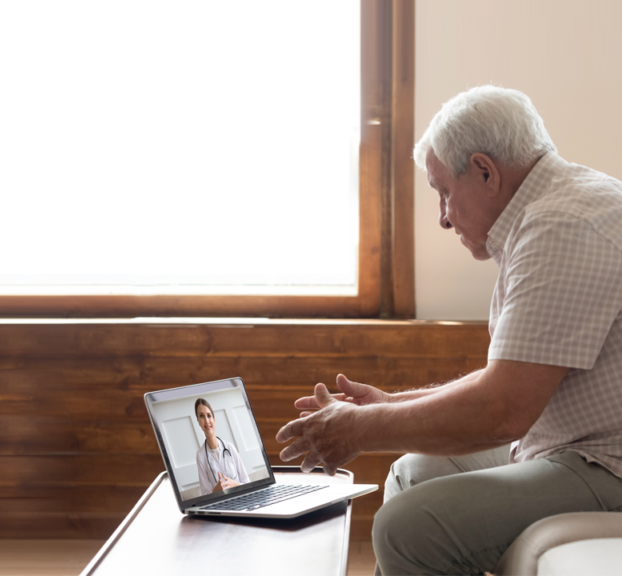Members of the Parkinson’s Foundation and the Parkinson’s Study Group (PSG), including VeraSci Senior Clinical Director of Movement Disorders Dr. Travis Turner, recently published a consensus statement titled “Expediting telehealth use in clinical research studies: recommendations for overcoming barriers in North America” in Nature Partner Journal (NPJ) Parkinson’s Disease. The paper outlines supporting evidence as well as barriers and solutions to implementation. A brief synopsis is provided below.
Although telehealth started gaining traction during the COVID-19 pandemic, good reasons exist to continue using telehealth in future studies. Increasingly, patients with Parkinson’s disease accept, and even prefer, telehealth for both clinical care and research visits. In a recent phase 3 clinical trial in Parkinson’s disease, 95% of participants completed remote video visits, and 75% said they were more likely to participate in future research if some visits could be conducted remotely. Additionally, telehealth can expand access to clinical trials to patients living in rural areas that would not be able to participate if it meant traveling to a distant study site for visits.
Despite the advantages of incorporating telehealth into clinical research, several barriers exist. The article focused on three key barriers:
- Differences in state licensure requirements for telehealth
- Limited access to telehealth among disadvantaged populations
- Lack of consistency between IRBs
When it comes to clinical care, the Center for Medicare and Medical Services in the US allows clinicians to provide care across state lines when the patient resides in a state where the clinician is not licensed. The guidelines are less clear for clinical research, and site IRBs have differing interpretations of whether a clinician can conduct a remote study visit with a participant that is not in a state where they are licensed. Canadian provinces have similar issues with consistency.
Telehealth also presents challenges for reaching underrepresented groups. Up to 20% of Americans do not have broadband access at home or do not have smartphones. While Telehealth circumvents some of the transportation issues that impact underserved populations, those same groups are more likely to lack access to the technology that enables telehealth.
The FDA has published a Guidance on the Conduct of Clinical Trials of Medical Products During COVID-19 Public Health Emergency, but not all IRBs have adopted the recommendations in the guidance. This means that sponsors must navigate varying requirements for telehealth use on a site-by-site basis when a central IRB is not used.
The comment concludes with a set of recommendations to standardize IRB requirements in a way that allows for remote and hybrid visits, encourages parity in payment for on-site and remote visits, and encourages the development of a field-wide guidance document for the use of telehealth for study visits.
